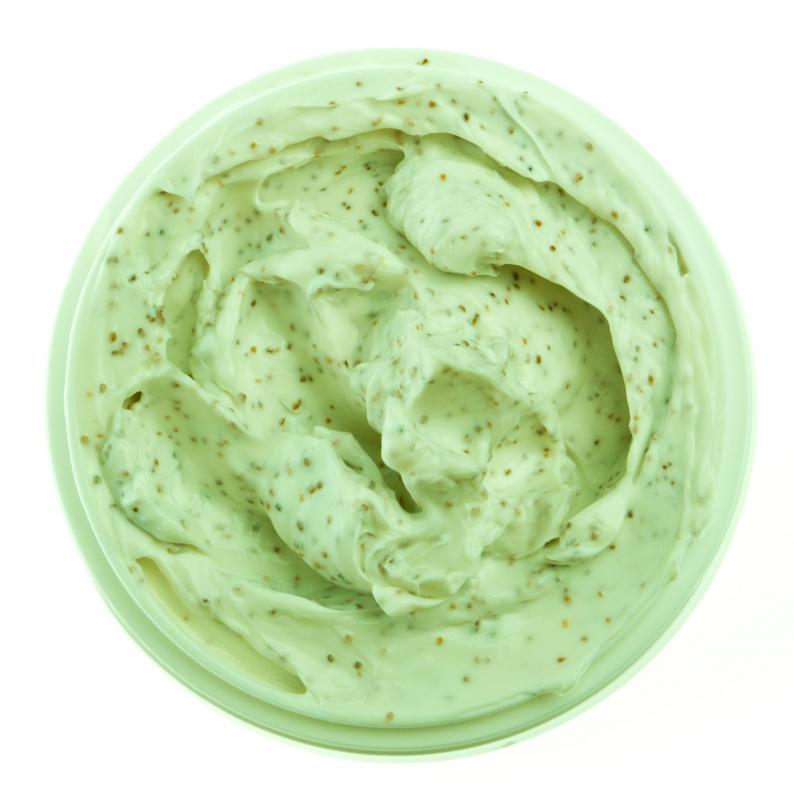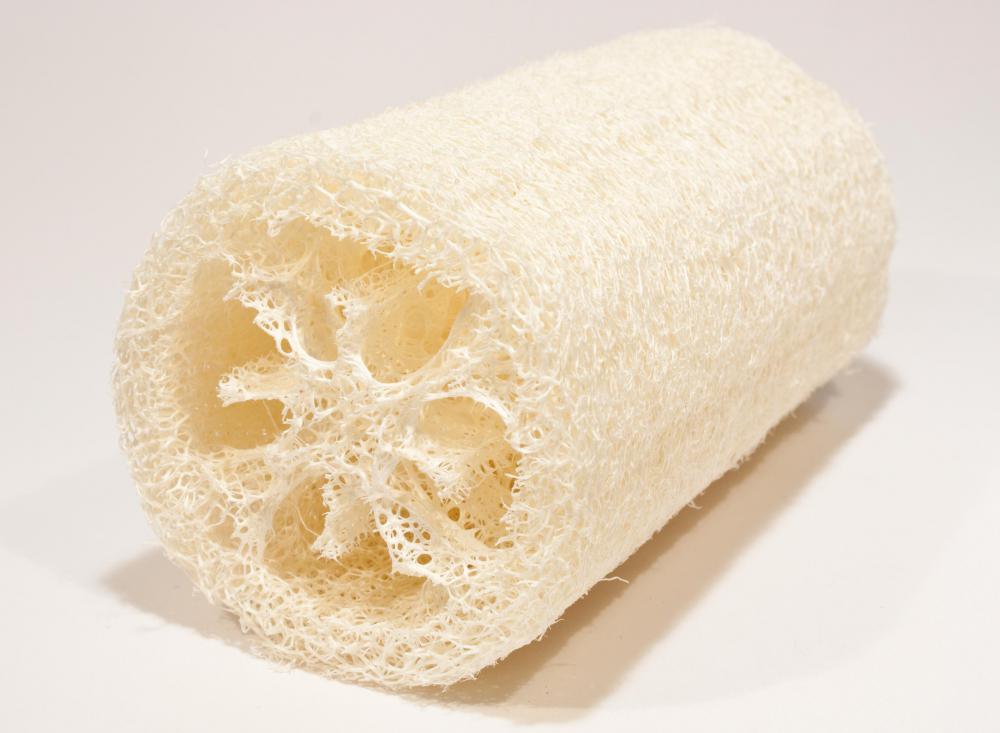At WiseGEEK, we're committed to delivering accurate, trustworthy information. Our expert-authored content is rigorously fact-checked and sourced from credible authorities. Discover how we uphold the highest standards in providing you with reliable knowledge.
What is the Most Common Treatment for Keratosis Pilaris?
The most common treatment for keratosis pilaris is topical moisture, usually in the form of lotions or creams. People often have the best luck when they gently exfoliate their skin first to remove any dead skin cells that may be blocking pores or otherwise standing in the way of healing. Standard moisturizers don’t always work, though. Individuals who don’t see a change within a few weeks should usually schedule an appointment with a dermatologist or other skin health specialist to talk about medicated options and more invasive solutions like microdermabrasion. Long-term care is also really important. In general, once a person starts a regimen, he or she usually needs to stick with it to prevent the condition from recurring.
Understanding the Condition Generally

Keratosis pilaris (KP) is a common skin condition that looks like small goose bumps around the hair follicles and is generally found on the upper arms and thighs, but, unlike goose bumps, it doesn’t usually go away. The irregular texture of the skin is thought to be caused by a buildup of excess keratin. It’s generally viewed as a harmless condition, but it can be cosmetically unattractive. It is most common in children and may be exacerbated during puberty, and it most cases it will diminish with age. Many people with keratosis pilaris are unaware that the condition has a name and can be treated. There isn’t usually a cure, and not every treatment will be effective for everyone; just the same, most people can experience temporary relief by following a regular skin-care routine.
Moisturization

The most common treatment for keratosis pilaris is skin lubrication with an over-the-counter moisturizer. People typically apply a thick cream or lotion to the affected skin multiple times a day, making sure to cover the entire area and allow it to soak in before covering with clothing or otherwise. It often takes a little while for this sort of treatment to start making a difference, often at least a week.
Regular Cleansing and Exfoliation

Depending on a person’s skin type and general condition, it might help to wash and exfoliate the skin first. Even very thick emollients can’t usually penetrate skin that is dirty or oily, or that is covered in a thick layer of dead cells. Most experts recommend gently washing the skin with warm water to open the pores, then using a mild cleanser to remove surface-level dirt.

Rubbing a small amount of exfoliating cream into the skin can also be helpful, particularly for people who suffer from either very oily or very dry skin. Exfoliation uses some sort of abrasive or grit to penetrate to first level of skin, and can lead to a much deeper clean. Loofahs and pumice stones can also be gently rubbed on the skin to achieve similar results. It’s usually a good idea to start with only occasional exfoliation, once a week or so, to avoid irritating the skin.
Medicated Creams

Retinoid creams can be an effective treatment in some cases. These are medicated and cause the skin’s outer layer to grow more rapidly, thereby decreasing the amount of keratin in the skin. This causes the surface layer to become thinner and the pores are less likely to become blocked. Retinoid creams are generally used for the treatment of acne, but some people believe they may benefit people with KP as well. In severe cases, doctors may also prescribe a topical steroid cream as a treatment for keratosis pilaris.
Importance of Long-Term Care

Keratosis pilaris is usually described as a chronic condition, and this means that it isn’t likely to be simply cured — no matter how much a person washes, exfoliates, and moisturizes the affected skin. In most cases, long-term treatment and consistency in regimen is the best way to get good results. Once the treatment is stopped, the condition most likely will return to its original state.
More Invasive Options
People who don’t have good luck with topical creams and home remedies might want to consider more invasive treatments like microdermabrasion and chemical peels, both of which are usually performed under a specialist’s guidance in a clinic or doctor’s office. Microdermabrasion is a minimally invasive office procedure that uses vacuum-assisted suction and abrasive particles to exfoliate the skin. This removes the excess keratin and outer layers of the skin. Chemical peels have a similar function. These are usually formulated as a cream that is slathered onto the face, then usually warmed with a special tool or lamp; it’s then peeled away to reveal cleaner, younger-looking skin.
These and similar treatments can cause negative reactions in some people, and they can also stand in the way of regular cell growth and skin regeneration if they’re performed too frequently. Most health care specialists will only perform these procedures on patients they have evaluated and examined before hand, and even then usually only once a month or so.
AS FEATURED ON:
AS FEATURED ON:
















Discuss this Article
Post your comments